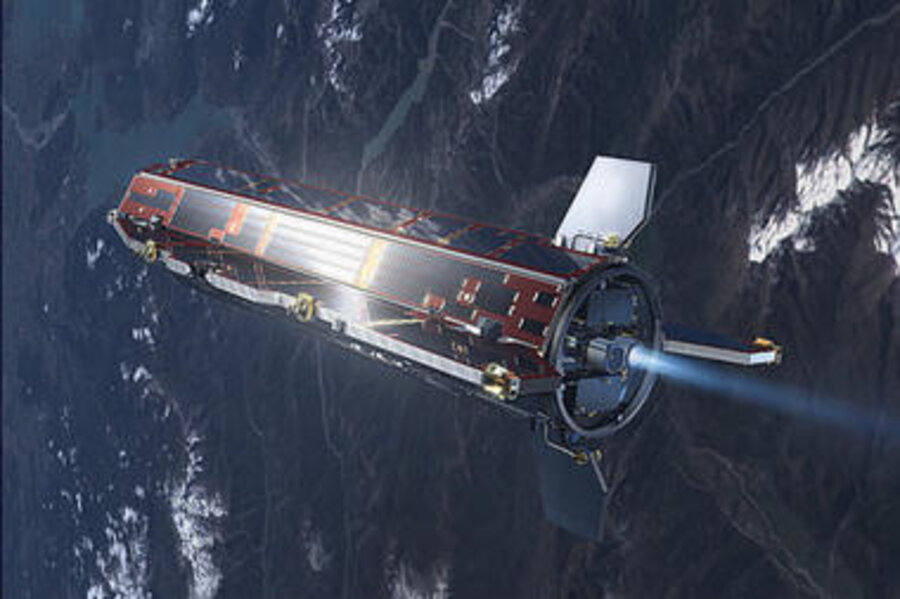Out of xenon, space seismometer GOCE closing in on crash with Earth
Loading...
| ATLANTA
US and European space scientists continue to work to predict the potential terranean fallout range from a snazzy one-ton European satellite called the GOCE that has sputtered out of fuel and is now orbiting the earth in ever tighter and faster circles, unable to resist the very gravity it has been studying.
Scientists believe the pickup-truck-sized satellite, formally known as the Gravity field and steady-state Ocean Circulation Explorer, will finally enter the Earth’s atmosphere and break up into dozens of pieces Sunday night or Monday.
“Current predictions, with orbit data from [Saturday morning], indicate a reentry during the night of Nov. 10/Nov. 11, with an uncertainty time window that still spans about 1 day,” writes Heiner Klinkrad of the European Space Agency’s Space Debris Office, in an email to the Monitor. “The spacecraft is expected … to spread a number of fragments along a ground impact swath of almost 1,000 kilometers in length.”
The chances of being hit by such space junk , however, is infinitesimal, Mr. Klinkrad points out, as the likelihood of being hit by lightning is 65,000 times greater than the possibility of being struck by GOCE debris. Still: Up to 500 pounds of total remaining mass, broken up into perhaps 50 pieces, could be driven into the ground somewhere on the planet.
Because the GOCE is orbiting from pole to pole, its remnants could fall almost anywhere given that the earth rotates at a cross-grain with the satellite’s orbit, Mark Hopkins, chair of the National Space Society’s executive committee, told FoxNews.com. (Follow its orbital path here.)
So far, officials at the European Space Agency’s Space Debris Office in Darmstadt, Germany have downplayed the potential for injury. The satellite has been losing up to 8 kilometers of altitude every day and is now close to the 80 kilometer orbital decay point where atmospheric reentry becomes imminent.
Because of its unique, finned design – it’s been dubbed the “Ferrari of Space” – GOCE will be an “aerodynamically shaped kinetic projectile once it will enter the lower atmosphere, … a proper dart … almost like a planetary penetrator,” writes TildalWave, a moderator on the Space Exploration Stack Exchange, a forum for spacecraft operators and space enthusiasts.
There are 21,000 small to large pieces of old satellites and other space gear constantly circling the earth, and pieces regularly fall to Earth. No one on the ground has ever been hit by falling satellite pieces, however.
Still, concerns about deadly space junk are running fairly high given the success of the movie “Gravity,” where a reluctant astronaut (Sandra Bullock) becomes lost in space after space junk from an exploded Russian satellite killed her colleagues and incapacitated the space shuttle.
Among the GOCE’s many research accomplishments as it studied the earth’s bumpy gravity field and mapped ocean levels: becoming the first satellite to record a seismic event back on earth – the March 11, 2011 earthquake in Japan. Until it ran out of fuel in October, the satellite had been utilizing xenon, a noble gas that fuels ion jets.
The 1979 Skylab reentry, the 1978 reentry of the nuclear-powered Cosmos 954 satellite, and the 2011 reentry of NASA’s massive UARS satellite are among some of history’s other large uncontrolled satellite returns.








